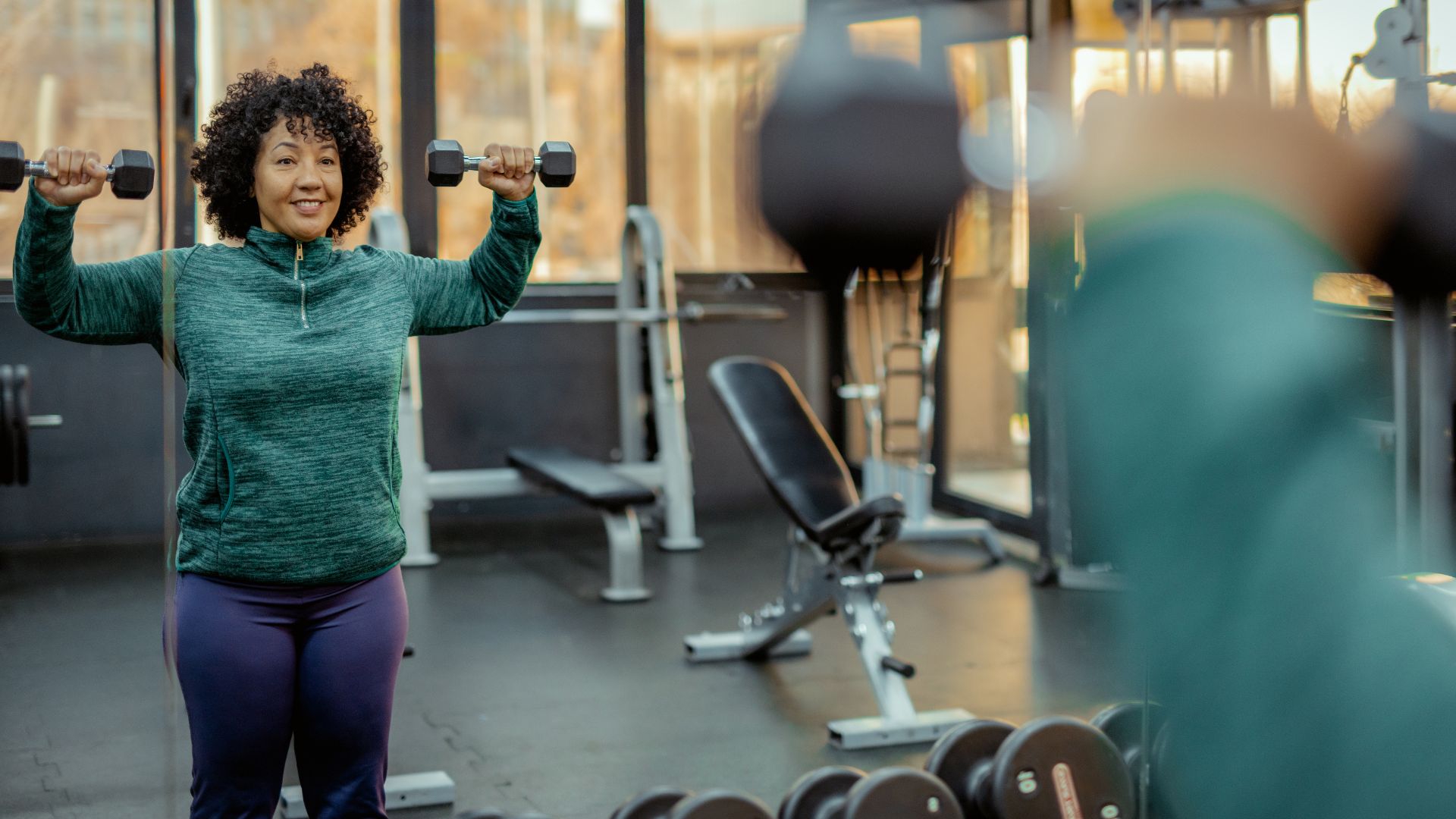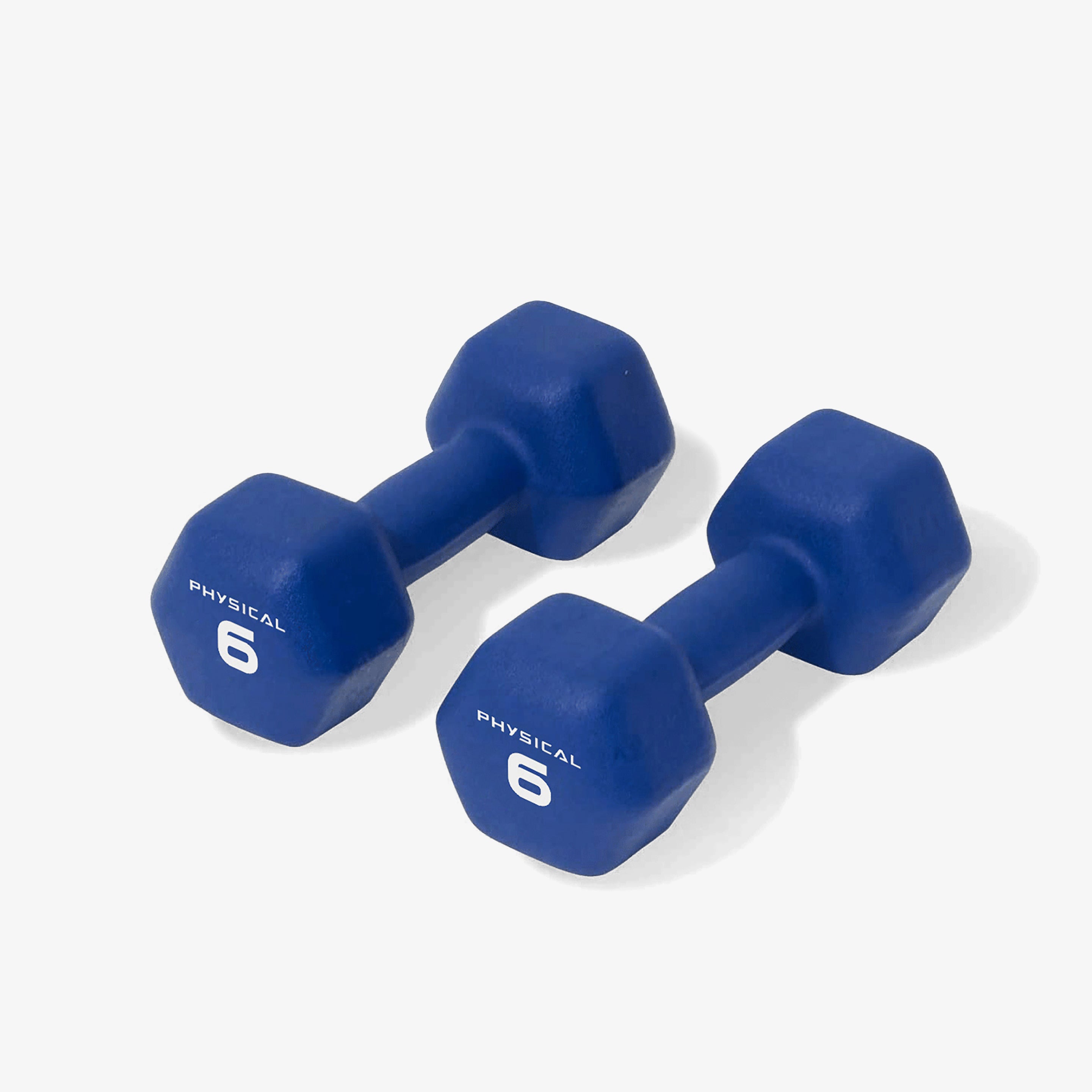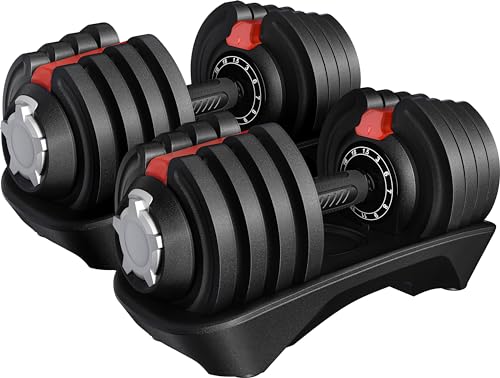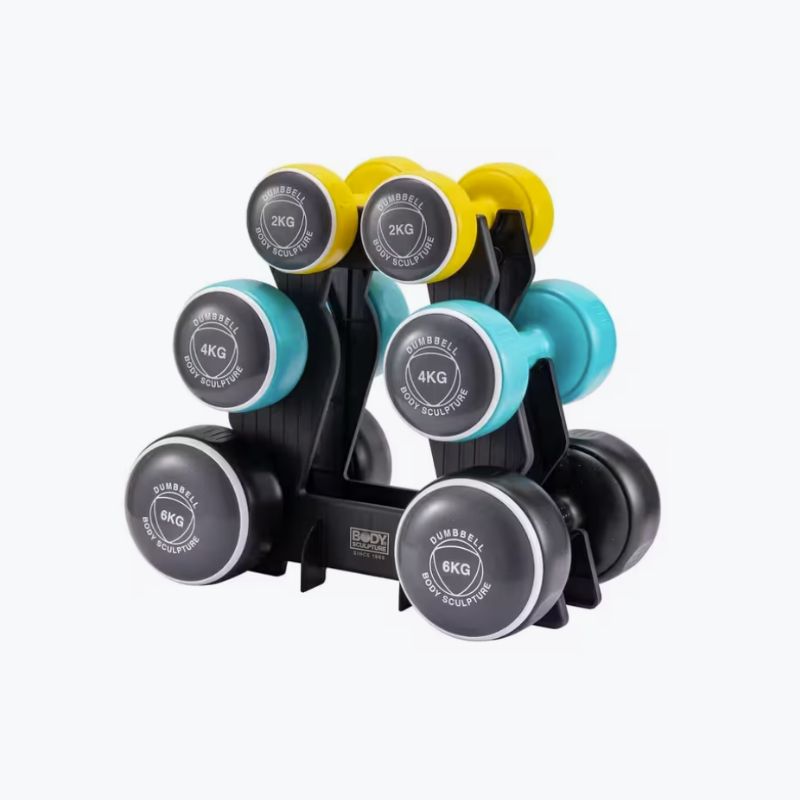Want stronger arms? This 6-step upper-body dumbbell workout is the easiest way to get them
An upper-body dumbbell workout is the fail-safe way to boost strength and muscle definition in the arms, shoulders, chest, and back


Importantly, an upper-body dumbbell workout can also improve mobility and flexibility in these muscles, helping with daily activities and improving health in the long term.
As the exercises use dumbbells, this workout is ideal for strength training at home or in the gym. All you need are a couple of weights and some space to move.
However, the key is working hard enough. Emma Simarro, a certified personal trainer, women's health specialist, and strength coach, prescribed this upper-body dumbbell workout. She says, "You want to be able to complete 10 to 12 reps with every set, but the last few should be a struggle. You'll know the weights are too light if the last repetition feels easy."
Whether this is your first dumbbell workout at home or you're familiar with the weights, Simarro's six moves can help you build a stronger, leaner, and more mobile upper body in just a few weeks.
Upper-body dumbbell workout
Simarro recommends trying each of these exercises for 3 sets of 10 to 12 repetitions, taking a short break between them to recover.
1. Shoulder press
As the name suggests, this exercise mainly targets the shoulder muscles on the front and sides. However, you also use your triceps (back of the arm) and trapezius muscles (between your shoulders and neck) in the movement.
Here's how to do a shoulder press with dumbbells:
Sign up to our free daily email for the latest royal and entertainment news, interesting opinion, expert advice on styling and beauty trends, and no-nonsense guides to the health and wellness questions you want answered.
- Standing tall, with feet hip-width apart, gently activate your glutes and quads to stabilise your hips, says Simarro.
- Bring the dumbbells onto your shoulders with your palms facing your ears for a neutral grip on the dumbbells.
- Take a deep breath and engage your core before pressing the dumbbells above your head. Exhale as you press them up.
- At the top of the movement, keep your biceps aligned with your ears and fully extend your arms, straightening your elbows.
- Slowly bring your dumbbells down to your shoulders before repeating 10-12 times.
2. Bent-over row
By going from the shoulder press into the bent-over row, you'll work more of your back muscles under fatigue, which helps them get stronger. Aside from the back muscles, the bent-over row works the biceps (front of the arm), rear shoulder muscles, and the smaller muscles around the spine.
Here's how to do it:
- Stand tall with the dumbbells by your sides, says Simarro.
- Hinge at the hips, push your bottom backwards and keep your back flat while holding the dumbbells down in line with your shoulders.
- Keep your chest up and bend your knees slightly. This will help distribute the weight and keep your spine straight, she says.
- Fix your gaze one metre ahead of your feet and start to pull the dumbbells back towards your hips (we want to pull the dumbbells to travel in a diagonal movement, front to back).
- Keep your elbows at 90 degrees at the top of the exercise. They should brush your ribcage as you pull the dumbbells towards your hips.
- Slowly lower the dumbbells back to the start position and repeat 10-12 times.
Expert tip: If you're in the gym but can't find the right dumbbells, you can also do the bent-over row with kettlebells.
3. Chest press
The chest press is known as a compound movement. Much like squats and walking lunges for the upper body, a chest press works multiple large muscle groups in the upper body at once. Namely, the muscles in the chest, shoulders, arms, back, and core.
- Lying on the floor with your knees bent and feet flat on the floor, engage your core.
- Bring the dumbbells above your chest, arms fully extended.
- Dumbbells should be at a 45-degree angle to one another above you.
- Slowly lower the dumbbells down to the floor, keeping your elbows tucked in at a 45-degree angle from your shoulders.
- Keep your wrists out so they sit directly above your elbows. We don’t want them to cave in towards your chest, says Simarro.
- Gently tap your elbows on the floor at the bottom of the movement, before driving through your palms to take the dumbbells back to the starting position.
Expert tip: The key to a good chest press is keeping your elbows at the right angle. "You should look like an arrow from above, not a 'T'," says Simarro.
Also, don't come down too hard at the bottom of the movement. "Think of the floor as glass," she says. "You don't want to smash it."
If you're doing a gym dumbell workout, it's best to do this exercise on a bench for better back support and a chance to go lower with your elbows.
4. Overhead tricep extension
The tricep extension is the opposite of the chest press. It only works one muscle - but working the tricep is important in an upper-body dumbbell workout. Not only is it very useful to have stronger triceps in everyday life (think pushing open doors and reaching up to a high shelf), but it can help with other exercises in this routine, such as the chest press or shoulder press.
Here's how to do a tricep extension with dumbbells:
- Standing tall with one foot slightly in front of the other for better balance. You can stand with feet parallel if preferred, says Simarro.
- Grip the top of the dumbbell with your palms facing the sky and fingers towards your face. This will keep your shoulders parallel.
- Take the dumbbell carefully above your head, with your arms fully extended.
- Engage your core and slowly lower the dumbbell behind your head until your elbows reach a 90-degree angle.
- Push into your palms and press the dumbbell back above your head until your arms are fully extended with your elbows locked out.
5. Bicep curl
Similarly to the tricep extension, the bicep curl works just the one muscle - the bicep, which sits on the front of your arm.
Here's how do it:
- Standing with your feet hip-width apart, grip the dumbbells by your sides with your palms facing toward your hips.
- Engage your core and tuck your elbows into your ribcage.
- Take a deep breath in before curling the dumbbells up towards your shoulders. Breathe out as you curl the dumbbells up.
- Once you reach your shoulders, pause before slowly lowering to your hips.
- Fully extend your elbows so they are relaxed at the bottom of the curl.
- Make sure you keep your elbows tucked into your ribcage. These shouldn’t move forward in the exercise.
6. Push-up
Learning how to do a push-up properly is one of the best ways to work the upper body, says Simarro. "I love a push-up and I think it is one of the most functional exercises we can practice," she says.
It targets the chest, shoulders, back, core, biceps, and triceps muscles. In fact, there's not a lot that this compound exercise can't do.
Here's a quick reminder on how to do a push-up:
- Set yourself up in a plank position, with your hands beneath your shoulders and your feet hip width apart.
- Engage your core, gently tuck your tailbone under and pull your shoulders down from your ears.
- Start to lower yourself to the floor, with your shoulders and hips moving together. Make sure you don't leave your hips in the air, says Simarro.
- Ideally, your chest will get as low as possible to the floor.
- Once in the bottom position, drive through your palms and push the floor away from you as you move back to your plank/modified plank position.
- As you push up, keep your shoulders stacked above your wrists.
- Keep your hips in line with your shoulders as you push up by engaging your core and glutes.
Expert tip: Once you're set up in the plank position, you can use a pillow under your chest to have something to aim for on the way down, the PT says.
You can also try a modified plank position if your core and upper-body strength isn't quite ready for a full push-up. "You can drop your knees to the floor for a modified push up," she says. "This will give you a nice line from the crown of your head to your knees."
What weight should beginners use?
This will be different for every beginner in strength training. "Expect it to be a little trial and error to begin with as you find the right weight for you," says Simarro. Start with 10 to 12 repetitions, and if they feel easy, especially by the third set, then you'll need to go up in weight.
Equally, she says, "If you get halfway through the round and can’t get any further, drop down a weight and build up from there. They won't be too heavy for long."
The 'talk test' is another good gauge of intensity, she adds. "You should be able to speak but not sing as you begin the set, but as you get to the last few repetitions, it should be challenging to say more than a few words, if any."
You can use a similar test to work out if you're doing enough moderate intensity exercise, which weight training falls under.

If you've got storage space, these hex dumbbells from Physical Company are a great option to use at home. The shape prevents them from rolling away from you on concrete or wooden floors and they have a pleasing feel to them, being coated in easy-to-clean neoprene.

For those happy to spend a bit more, I'd really recommend buying a set of adjustable dumbbells like these - our top pick from Yaheetech via Amazon. They go up to 18kg in small increments, adjusted by a simple (but secure) locking mechanism, making them great for both upper-body and lower-body workouts.

If adjustable dumbbells aren't in your budget, a dumbbell rack is also a good choice. This one from Decathlon starts with dumbbells at 2kg and goes up to 6kg, which is ideal for real beginners. However, you'll likely need more than this in the months to come, so be prepared to buy again - or opt for the adjustable set if you can.
How many times a week should you do an upper-body dumbbell workout?
Ideally, you would want to train more frequently to work all the muscle groups enough throughout the week, says Simarro. "In this instance, two sessions of each workout (two upper body and two lower body) would be ideal to see results in strength and improved muscle mass," she says.
But if you can't do this, then work out how often you can lift weights every week. Ideally, aim for three sessions.
"Full body sessions target all your major muscle groups in one session, but repeating three times a week would give you the frequency you need to see results," she says.

Grace Walsh is woman&home's Health Channel Editor, working across the areas of fitness, nutrition, sleep, mental health, relationships, and sex. She is also a qualified fitness instructor. In 2025, she will be taking on her third marathon in Brighton, completing her first ultra marathon, and qualifying as a certified personal trainer and nutrition coach.
A digital journalist with over seven years experience as a writer and editor for UK publications, Grace has covered (almost) everything in the world of health and wellbeing with bylines in Cosmopolitan, Red, The i Paper, GoodtoKnow, and more.